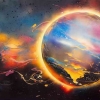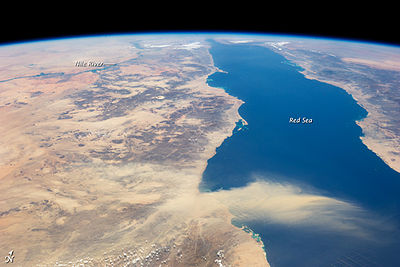[caption id="attachment_361475" align="aligncenter" width="400" caption="http://en.wikipedia.org/wiki/Red_Sea"][/caption]
A hundred years ago it was suspicious to why the continents if considered puzzle pieces could be joined together almost perfectly, or why the same fossils were found a great distance away from each other. Scientists at the time had no explanation for this and it might as well have been considered a coincidence.
Alfred Wegener the german was a meteorologist and in 1915 proposed his continental drift theory. He believed that earth once had a supercontinent which he named pangaea (in greek, meaning all lands). Continental drift he hypothesized occured 200 million years ago broke the supercontinent into the pieces we see today. Wegener didn't have a solid foundation to prove his theory and the many hypotheses he contributed were disproved by the scientific community.
One of Wegener's many hypotheses was further developed by Arthur Holmes. It was that mantle experienced the process of convection where if a section was hot it would start to rise as it got less dense and if said section was cold, it would become denser and sink. This was the force that broke apart the supercontinent and it continues to shape the face of the earth today.
It wasn't until after world war 2 long after Wegener's death did continental drift start to be accepted. WW2 brought the world radar technology which mapped the seafloor structure and discovered the process of seafloor spreading where hot underwater magma (oceanic crust) exits the oceanic ridge (underwater volcano spanning to 2000km wide), confirming the hypothesis.
When magma rises from earth's core via oceanic crust or a land volcano, there has to be an input to balance the equation. When 2 mantles collide the less dense mantle will sink and return to beneath the earth's surface. Sometimes the other mantle will rise above the sunken mantle and form a mountain. Unsteady tectonic plates can also cause volcanic eruptions which scientists are currently unable to predict.
http://en.wikipedia.org/wiki/Seafloor_spreading
http://www.earthobservatory.sg/
http://www.scec.org/education/k12/learn/plate2.htm
http://www.ucmp.berkeley.edu/geology/techist.html
http://en.wikipedia.org/wiki/Mountain_formation










